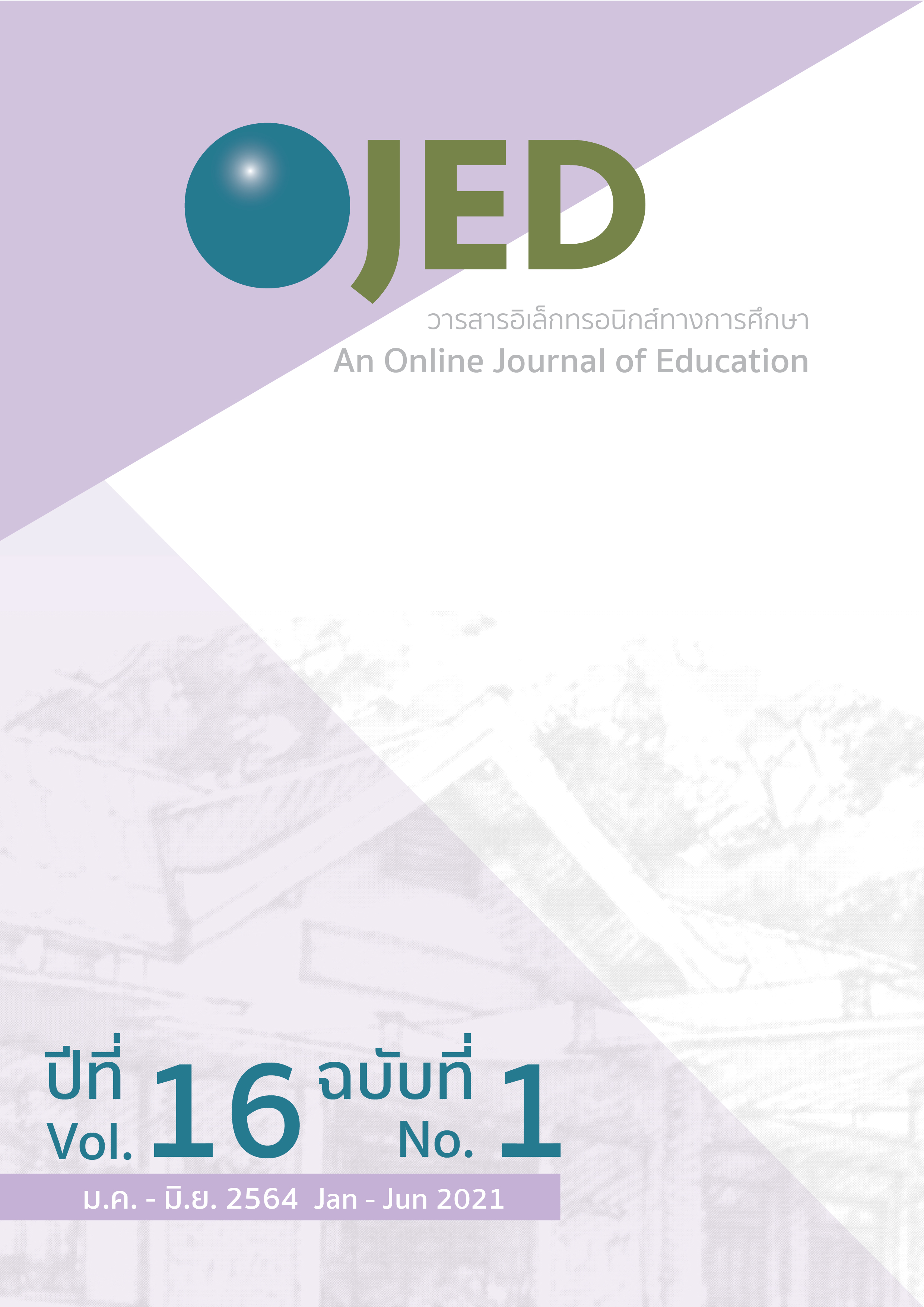Enhancing English Speaking Ability through Task Repetition Using the 4/3/2 Technique in Public Speaking Activities
DOI:
https://doi.org/10.14456/ojed.2021.10Keywords:
Task repetition, 4/3/2 Technique, Public speakingAbstract
The present study aimed to investigate the effects of task repetition using the 4/3/2 technique in public speaking activities on the English speaking ability of upper secondary school students. The participants of the study were 13 twelfth-grade students studying in one public school in Bangkok in the first semester of academic year 2017. The instruments in the study were a speaking evaluation form and a rubric for content in public speaking. For data analysis, the quantitative data was analyzed by one-way repeated measures ANOVA to investigate the correlation among 4 minute-speaking, 3-minute speaking, and 2-minute speaking. The results revealed that after implementing task repetition using the 4/3/2 technique in public speaking activities, the students’ speaking fluency was significantly increased. However, apparent changes could not be seen from the results regarding students’ speaking accuracy and speech content.
References
Bailey, K. M. (2005). Practical English language teaching: Speaking. New York, America: McGraw-Hill.
Bei, G. X. (2013). Effects of immediate repetition in L2 speaking tasks: A focused study. English Language Teaching, 6(1), 11-19.
Bygate, M. (1996). Effects of task repetition: Appraising the developing language of learners. In D. Willis & J. Willis (Eds.), Challenge and change in language teaching (pp. 136–146). London, England: Heinemann.
De Jong, N., & Perfetti, C. A. (2011). Fluency training in the ESL classroom: An experimental study of fluency development and proceduralization. Language Learning, 61(2), 533–568.
Harmer. J. (2015). The practice of English language teaching. Harlow, England: Pearson Education.
Hunter, K. M., Westwick, J. N., & Haleta, L. L. (2014). Assessing success: The impacts of a fundamentals of speech course on decreasing public speaking anxiety. Communication Education, 63(2), 124-135.
Iberri-Shea, G. (2009). Using public speaking tasks in English language teaching. English Teaching Forum, 47(2), 18-23, 35-36.
Indrarathne, B. (2014). Effects of task repetition on written language production in Task Based Language Teaching, Papers from the Lancaster University Postgraduate Conference in Linguistics & Language Teaching 2013
Jaiyai, S., Torwong, P., Usaha, S., Danvirattana, A., Luangthongkam, S., & Piyadamrongchai, R. (2005). The existing situations and problems relating to foreign language teaching and learning in the northeastern part of Thailand (Educational Region 5). The Thailand Research Fund.
Liao, H. (2014). Examining the role of collaborative learning in a public speaking course. College Teaching, 62(2), 47-54.
Macalister, J. (2014). Developing speaking fluency with the 4/3/2 technique: An exploratory study. TESOLANZ Journal, 22(1), 28-42.
Nation, P. (1989). Improving speaking fluency. System, 17(3), 377-384.
Sim, M. A., & Pop, A. M. (2016). Teaching speaking skills. Annuals of the University of Oradea, Economic Science Series 25 (1), 264-273.
Somdee, M. (2012). Developing English speaking skills of Thai undergraduate students by digital storytelling through websites (Master’s thesis, Suranaree University of Technology, Nakhon Ratchasima). Retrieved from http://sutir.sut.ac.th:8080/sutir/ bitstream/123456789/4169/2/Fulltext.pdf
Thai, C., & Boers, F. (2016). Repeating a monologue under increasing time pressure: Effects on fluency, complexity, and accuracy. TESOL QUARTERLY, 50(2), 369-393.
Thornbury, S. (2005). How to teach speaking. Harlow, England: Pearson Education.
VanPattern, B., & Keating, G. (2007, April). Getting tense. Paper presented at the annual meeting of the American Association for Applied Linguistics, Costa Mesa, CA.
Zhang, D. Y. (2009). Public speaking and the development of language competence. In L. Wang, & P. Li (Eds.), English public speaking in global context: challenges and innovations (pp. 125-133). Beijing: Foreign Language Teaching and Research Press.
Downloads
Published
How to Cite
Issue
Section
License

This work is licensed under a Creative Commons Attribution-NonCommercial-NoDerivatives 4.0 International License.




